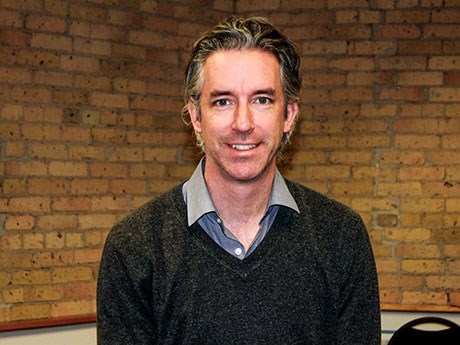Rio Tinto Centre for Underground Construction produces best practices for developing block cave mines
Outcomes from the Centre for Excellence in Mining Innovation’s (CEMI) Rio Tinto Centre for Underground Mine Construction (RTC-UMC) will help Rio Tinto to safely and cost-effectively develop large block cave mines at depth.
The conclusion of the $10 million research program was marked October 6th at CEMI’s annual general meeting in Sudbury with a series of presentation by founding RTC-UMC director Dr. Peter Kaiser, his successor, Matt Pierce, and Rio Tinto geotechnical engineer Jacques Tshisens.
The original goal of the Centre was to improve ground characterization techniques and develop innovative support systems to facilitate high-speed, mechanized tunnel and shaft development technologies as part of Rio Tinto’s Mine of the Future project. However, in 2012, Rio abandoned plans for using tunnel and shaft boring machines, deciding to rely instead on conventional drill and blast techniques for developing the extraction and undercut levels and all of the supporting rim drives and accesses in its block cave operations.
“That resulted in a big change in the focus of the Centre,” said Pierce, a Minneapolis-based principal engineer with Itasca Consulting.
Beginning in 2013, research focused on the development of best practices for rock characterization and innovative techniques for ground support in block cave copper porphyry mines.
“Mining companies have struggled for years to deal with the kind of rock types that are found at depth,” said Pierce.
Techniques for dealing with rock masses that are jointed and have pre-existing fractures are well understood, but “now, Rio Tinto is encountering at its Oyu Tolgoi and Resolution mines much more massive rock,” said Pierce. “It’s not really jointed, but is heavily veined. How you characterize these rock masses has been a big challenge. If you use traditional techniques, you will likely significantly underestimate the rock mass strength. The implication for that is you’re going to overdesign the pillars in your extraction level, and you’re going to increase the capital cost for development, so the thinking was to take a step back and rethink how we characterize the massive, veined rock masses and revisit the tools and techniques we use for characterizing their quality and strength.
“Nobody had ever taken that leap and been willing to put it out there to industry as a new standard, so that was a big focus and the outcome of that was a document that Rio Tinto now uses as to go-to standard internally for drill core logging, underground mapping, lab testing and rock mass strength estimation.”
Resolution Mine, a joint venture of Rio Tinto and BHP Billiton in Arizona, is approximately two kilometres underground. Oyu Tolgoi in Mongolia is at a depth of 1.6 kilometres.
“There are deeper mines than this, but what’s unique about these cave mines is the size of their footprint,” said Pierce. “They are more than one kilometre by one kilometre in size. The extraction level has hundreds if not thousands of drawpoints spread over a very large area and that scale of a cave at that depth is relatively new territory. That has been the motivator for a lot of this research.”
Another focus of the Centre’s research was footprint reliability, “a fancy term for making sure over the life of a cave that the extraction level stays stable,” said Pierce. “Massive, veined rock masses fail in a very different way than classically jointed rocks. It’s not blocks falling out of the crown of the tunnel or squeezing in. We have a new mechanism we have to deal with that’s called spalling. It’s where you get new fractures propagating parallel to the tunnel walls, which produces a slab of rock that wants to detach and move into the opening.
“The real breakthrough for supporting this ground was conceived by Peter Kaiser. It’s called the gabion concept. A gabion is something that you’d see more in a civil engineering context. It’s a wire mesh container with rocks. They’re used worldwide for retaining walls. In the extraction levels of block cave mines, we always have to deal with broken rock in the walls of the tunnel, so Peter’s concept is to use existing ground support techniques – short stiff bolts spaced very tightly – and to use a gabion to knit together the broken rock by installing mesh on the surface of the tunnel, then tying that back deeper into the tunnel wall with longer cables.”
Although overseen in Sudbury by CEMI, the work included in situ studies in Australia and Indonesia, numerical modeling by Itasca and laboratory-based physical modeling in Chile. The solution team also included Golder Associates, SRK Consulting, Aker Wirth, Atlas Copco, MIRARCO and universities in Canada, the U.S. and Switzerland.
For now, the learnings are proprietary to Rio Tino, “but Rio has discussed sharing them with the industry at large,” said Pierce. “It’s just a matter of working out a time frame and a means of doing it.”



.jpg;w=120;h=80;mode=crop)